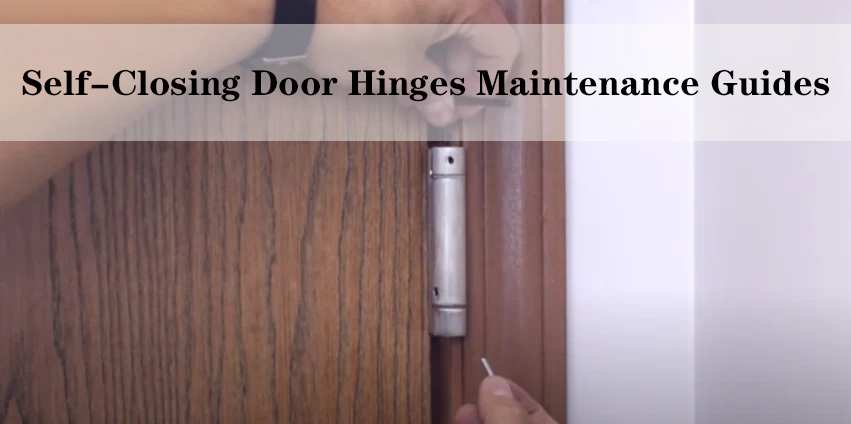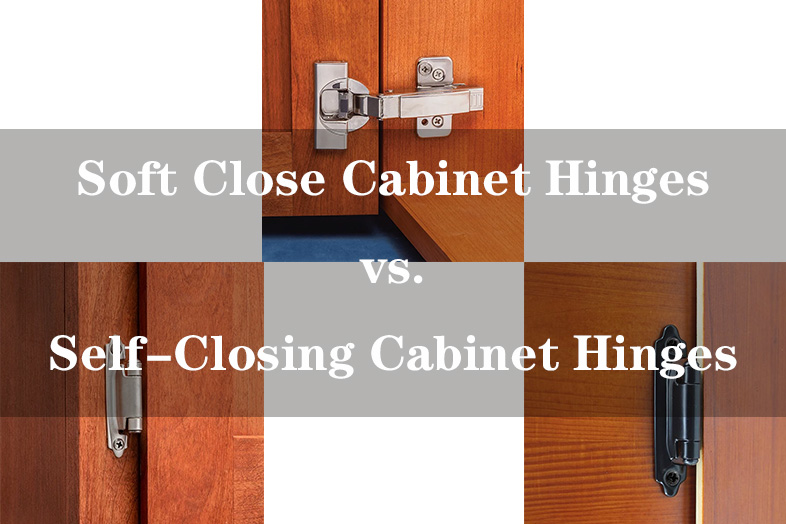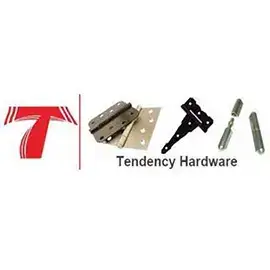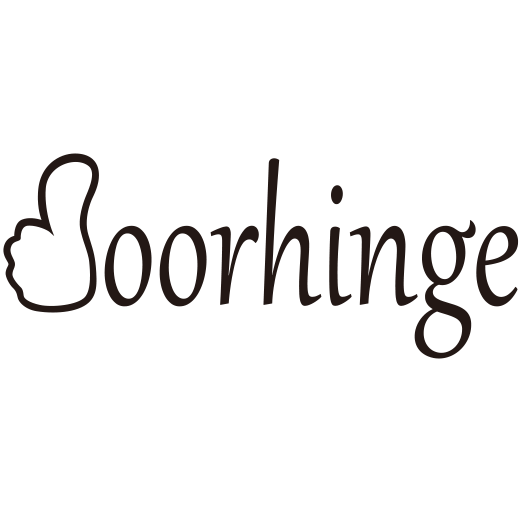Heavy duty hinges are the unsung heroes of doors and gates that carry a lot of weight. But like any hero, they can face challenges. In this guide, we’ll explore some common problems that heavy duty hinges encounter and easy ways to fix them: squeaky hinges, misaligned hinges, hinge wear and tear, stiff hinges, sagging doors, door won’t stay open or closed, hinge pin removal, rusty hinges, loose screws, and hinge gap.
(Notes: The blog of Common Problems of Heavy Duty Hinges and How to Fix Them divided into two parts. The second part title is Common Problems of Heavy Duty Hinges and How to Fix Them: Part 2)
Problem 1: Squeaky Hinges

We’ve all experienced it – that unpleasant, high-pitched squeak when opening or closing a door. Squeaky hinges are a common annoyance that can disrupt the tranquility of your space.
Solution: Lubrication
Fortunately, the solution to this problem is relatively straightforward. Lubrication is the key to silencing those squeaky hinges and restoring peace to your surroundings. Here’s how you can do it:
1. Gather Your Supplies: You’ll need a lubricant. Opt for a silicone-based lubricant, WD-40, or even household cooking oil.
2. Prepare the Hinge: Open the door fully to access the hinge. If the door swings in both directions, you might need to remove the pin from the hinge.
3. Apply the Lubricant: Using a cloth or a small brush, apply a thin layer of lubricant to the hinge’s moving parts. Make sure to cover both the hinge pins and the areas where the hinge components rub against each other.
4. Work the Hinge: After applying the lubricant, open and close the door multiple times to allow the lubricant to penetrate and spread evenly across the hinge’s surfaces.
5. Wipe Excess: Wipe off any excess lubricant to prevent it from attracting dirt and dust.
6. Test the Door: Open and close the door again to see if the squeak has been eliminated. If necessary, you can repeat the lubrication process.
Preventive Measures
To prevent squeaky hinges in the future, consider the following tips:
Regular Maintenance: Schedule regular maintenance to keep hinges well-lubricated.
Quality Lubricant: Invest in a good-quality lubricant that will provide long-lasting relief from squeaks.
Clean Hinges: Keep hinges clean and free from debris that could contribute to squeaking.
Problem 2: Misaligned Hinges
A door that doesn’t close properly or rubs against the frame can be frustrating. Misaligned hinges are often the culprit behind this issue, causing the door to operate unevenly.
Solution: Realigning Hinges
Fixing misaligned hinges doesn’t require advanced skills – a few simple steps can get your door back on track. Here’s how to tackle the problem:
Identify the Misalignment: Carefully observe the door as it opens and closes. Note whether it’s sagging, rubbing, or not fitting properly within the frame.
Loosen the Screws: On the hinge attached to the door or frame (depending on the type of misalignment), slightly loosen the screws. Don’t remove them completely – just enough to allow for movement.
Adjust the Hinge Position: Gently lift or lower the door to adjust its position. For a door that’s rubbing against the frame at the top, slightly lift the door while holding the hinge in place. For a door that’s rubbing at the bottom, lower the door while holding the hinge.
Retighten the Screws: With the door in the desired position, tighten the screws on the hinge. Be cautious not to over-tighten, as this could cause new alignment issues.
Test the Door: Open and close the door multiple times to ensure it operates smoothly and no longer rubs against the frame.
Fine-Tuning: If the misalignment is minor, you might need to make slight adjustments by repeating the process. Patience is key here.
Preventive Measures
To prevent future misalignments, consider these preventive measures:
Regular Inspection: Periodically check for any signs of misalignment or rubbing.
Tighten Hinges: Ensure all hinge screws are tight to prevent hinges from becoming loose over time.
Gentle Handling: Open and close doors gently, avoiding excessive force that could strain hinges.
Problem 3: Hinge Wear and Tear
Over time, heavy duty hinges can show signs of wear and tear. This can lead to decreased functionality and compromise the overall performance of doors or gates.
Solution: Regular Inspection and Replacement
Preventing and addressing hinge wear and tear is crucial to maintaining the longevity of your doors and gates. Here’s how you can tackle this issue:
Regular Inspection: Schedule periodic inspections of your hinges. Look for signs of rust, cracks, or any visible damage. Check both the hinge plates and the hinge pins.
Cleaning: If you notice any dirt or debris around the hinge area, clean it off gently with a soft cloth or brush. Keeping the hinge clean can prevent unnecessary wear.
Lubrication: Apply a lubricant to the moving parts of the hinge. This will reduce friction and help prevent excessive wear.
Replace Worn Hinges: If you identify significant wear, rust, or damage, it’s time to replace the hinge. Choose a replacement hinge that matches the weight and load capacity of the door or gate.
Professional Help: If you’re unsure about the extent of wear or how to replace a hinge, it’s best to seek professional assistance. They can assess the situation and recommend appropriate solutions.
Preventive Measures
To minimize hinge wear and tear over time, consider these preventive actions:
Regular Maintenance: Establish a maintenance schedule to inspect and maintain your hinges.
Quality Hinges: Invest in high-quality heavy duty hinges that are designed to withstand wear and tear.
Proper Installation: Ensure hinges are installed correctly and securely to prevent premature wear.
Problem 4: Stiff Hinges
Stiff hinges can turn the simple act of opening and closing a door into a struggle. This issue can be caused by dirt, rust, or lack of lubrication, making the door operation less than smooth.
Solution: Lubrication and Cleaning
Thankfully, resolving stiff hinges doesn’t require advanced skills. With a bit of cleaning and lubrication, you can have your hinges operating seamlessly once again. Here’s what you need to do:
Assessment: Begin by identifying which hinges are causing the stiffness. Carefully open and close the door while observing where the resistance is.
Cleaning: If the hinges are visibly dirty, use a soft brush or cloth to remove any dirt or debris that might be causing the stiffness. This simple step can make a big difference.
Lubrication: Apply a lubricant to the moving parts of the hinge. Choose a silicone-based lubricant or a specialized hinge lubricant. Avoid using WD-40 or cooking oil, as these can attract dirt over time.
Work the Hinge: After applying the lubricant, open and close the door multiple times to distribute the lubricant evenly and help loosen any stiff spots.
Wipe Excess: Wipe off any excess lubricant to prevent it from dripping onto the floor or attracting dirt.
Test the Door: Open and close the door to see if the stiffness has been resolved. If the issue persists, you might need to repeat the cleaning and lubrication process.
Preventive Measures
To prevent hinges from becoming stiff in the future, consider these preventive measures:
Regular Cleaning: Include hinge cleaning in your routine cleaning tasks to prevent dirt buildup.
Scheduled Lubrication: Add hinge lubrication to your maintenance schedule to keep hinges moving smoothly.
Quality Lubricant: Use a high-quality lubricant that provides long-lasting results without attracting dirt.
Problem 5: Sagging Doors
Doors that sag can be a frustrating issue, leading to improper closing, uneven gaps, and an overall unappealing appearance. This problem often stems from worn-out or misaligned hinges.
Solution: Hinge Replacement and Adjustment
Dealing with a sagging door requires a combination of hinge replacement and adjustment to restore proper alignment and functionality. Here’s how you can tackle this problem:
Assessment: Carefully examine the door to determine where the sagging is most pronounced. Note whether the door is higher or lower on one side.
Hinge Replacement: If the door is significantly sagging, it might be due to worn-out hinges. Replace the worn hinges with new ones that match the weight and size of the door.
Adjustment: If the sagging is minor, you can attempt to adjust the hinges. Loosen the screws on the hinge attached to the door or frame (depending on the sag direction). Gently lift or lower the door to the desired position, and then retighten the screws.
Shim Support: If the door still sags after hinge replacement and adjustment, consider using shims to provide support. Place shims between the hinge and the door or frame to lift the sagging side.
Professional Help: If the door continues to sag despite your efforts, seeking professional assistance is recommended. Professionals can accurately diagnose the issue and provide effective solutions.
Preventive Measures
To prevent doors from sagging in the future, consider these preventive actions:
Quality Hinges: Invest in heavy duty hinges that can withstand the weight of the door over time.
Regular Maintenance: Include hinge inspection in your regular maintenance routine to catch early signs of sagging.
Proper Installation: Ensure hinges are installed correctly and securely to prevent premature sagging.
(Notes: The second part is Common Problems of Heavy Duty Hinges and How to Fix Them: Part 2)























